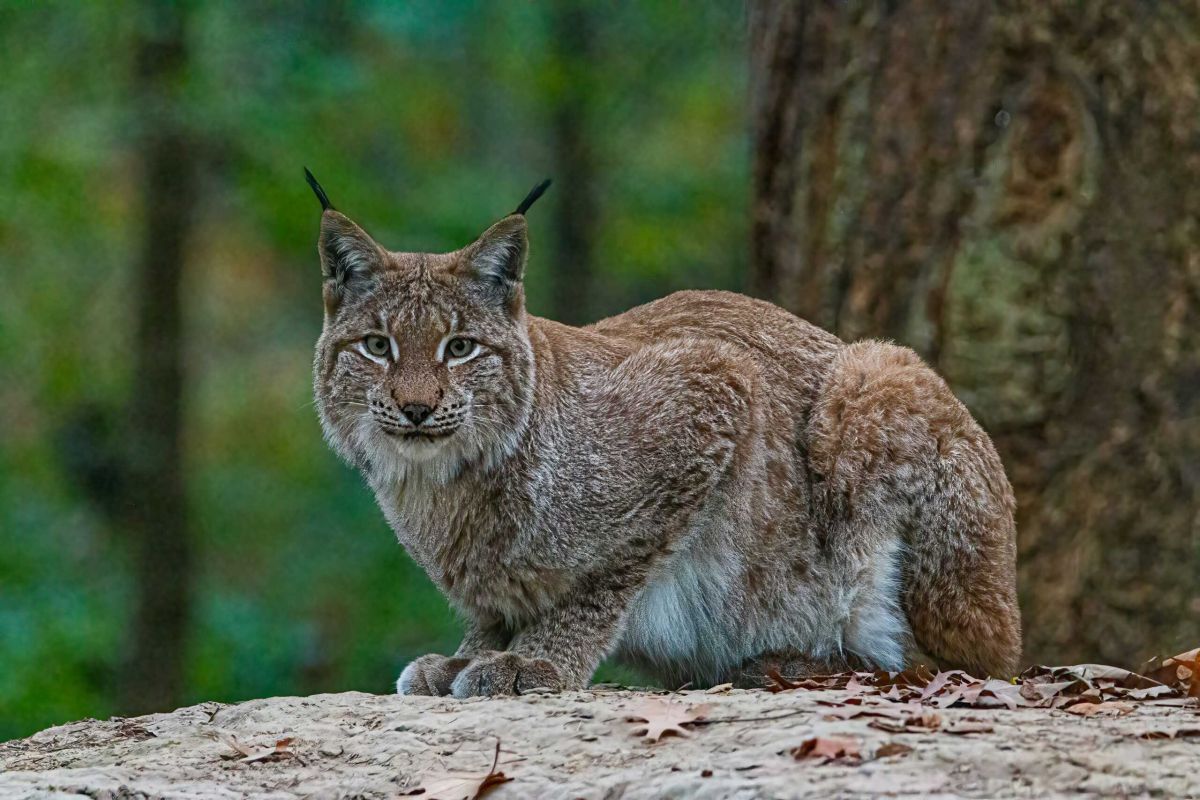The Eurasian Lynx: Guardian of the Forests

The Eurasian lynx (Lynx lynx) is a fascinating and elusive feline that captures the imagination of wildlife enthusiasts and conservationists alike. As the largest species of lynx, it is known for its striking appearance, solitary behavior, and vital role in the ecosystems it inhabits. This article will dive into the natural history, habitat, behavior, and conservation status of the Eurasian lynx, highlighting why it is crucial to protect this magnificent creature.
Physical Characteristics
The Eurasian lynx is a formidable predator, characterized by its unique physical traits. It typically weighs between 18 to 30 kilograms (40 to 66 pounds) and has a body length that ranges from 80 to 130 centimeters (31 to 51 inches), with males being larger than females. Its thick fur varies in color from light yellowish-brown to a reddish hue, adorned with dark spots that provide camouflage in its dense forest habitat. One of its most distinctive features is the tufted ears, which help amplify sound and allow the lynx to detect prey even in the thickest underbrush. Its long legs and large paws are adapted for walking on snow, providing the lynx with a significant advantage in its cold, snowy habitats.
Habitat and Distribution
The Eurasian lynx is native to the forests and mountainous regions of Europe, Asia, and Siberia. These cats thrive in a variety of habitats, including boreal forests, alpine areas, and even scrubland, as long as adequate cover and prey are available. They are typically found at elevations ranging from sea level to over 3,000 meters (9,800 feet), demonstrating remarkable adaptability. Over the years, the lynx’s range has expanded in some areas due to successful conservation efforts, as well as the re-introduction of the species into parts of its former range.
Behavior and Diet
Eurasian lynxes are primarily solitary animals, coming together only during the mating season. They are crepuscular, meaning they are most active during twilight hours. This behavior allows them to avoid downy hunters like wolves while maximizing their hunting opportunities. Lynx territories can vary greatly in size, ranging from 20 to 200 square kilometers (8 to 77 square miles), depending on the density of prey and other environmental factors.
As skilled hunters, Eurasian lynxes primarily feed on small to medium-sized ungulates such as deer and roe deer, as well as hares, birds, and rodents. Their preferred hunting style involves stalking quietly and pouncing from a short distance, showcasing their agility and stealth. The lynx’s role as a predator helps maintain the balance of the ecosystem by keeping herbivore populations in check.
Reproduction
The Eurasian lynx typically mates between February and March. After a gestation period of about 70 to 80 days, the female gives birth to a litter of 1 to 4 kittens in a safe, secluded den. The kittens are born blind and rely on their mother for nourishment and protection during the first few weeks of life. As they grow, the mother teaches them essential skills necessary for survival, including hunting and navigating their environment. The young lynxes are weaned around two months of age but remain with their mother for up to a year until they can establish their territories.
Conservation Status
The Eurasian lynx has faced numerous threats throughout its history, leading to declines in many parts of its range. Habitat loss, poaching, and prey depletion are significant challenges that have impacted these majestic cats. However, due to ongoing conservation efforts and legal protections, many populations are now recovering.
Organizations dedicated to wildlife preservation have worked tirelessly to monitor lynx populations, educate local communities about their ecological importance, and promote habitat protection. Reforestation projects, the establishment of wildlife corridors, and initiatives aimed at reducing human-wildlife conflict have also been instrumental in safeguarding the future of the Eurasian lynx.
Conclusion
The Eurasian lynx is not just a captivating animal; it is a crucial component of the ecosystems it inhabits. Its role as a predator helps maintain the delicate balance of nature, ensuring that prey populations remain sustainable. As we continue to confront challenges such as habitat destruction and climate change, it is vital that we remain vigilant in our conservation efforts to protect the Eurasian lynx and the rich biodiversity it represents. By fostering a deeper understanding and appreciation for this magnificent feline, we can ensure its survival for generations to come.



